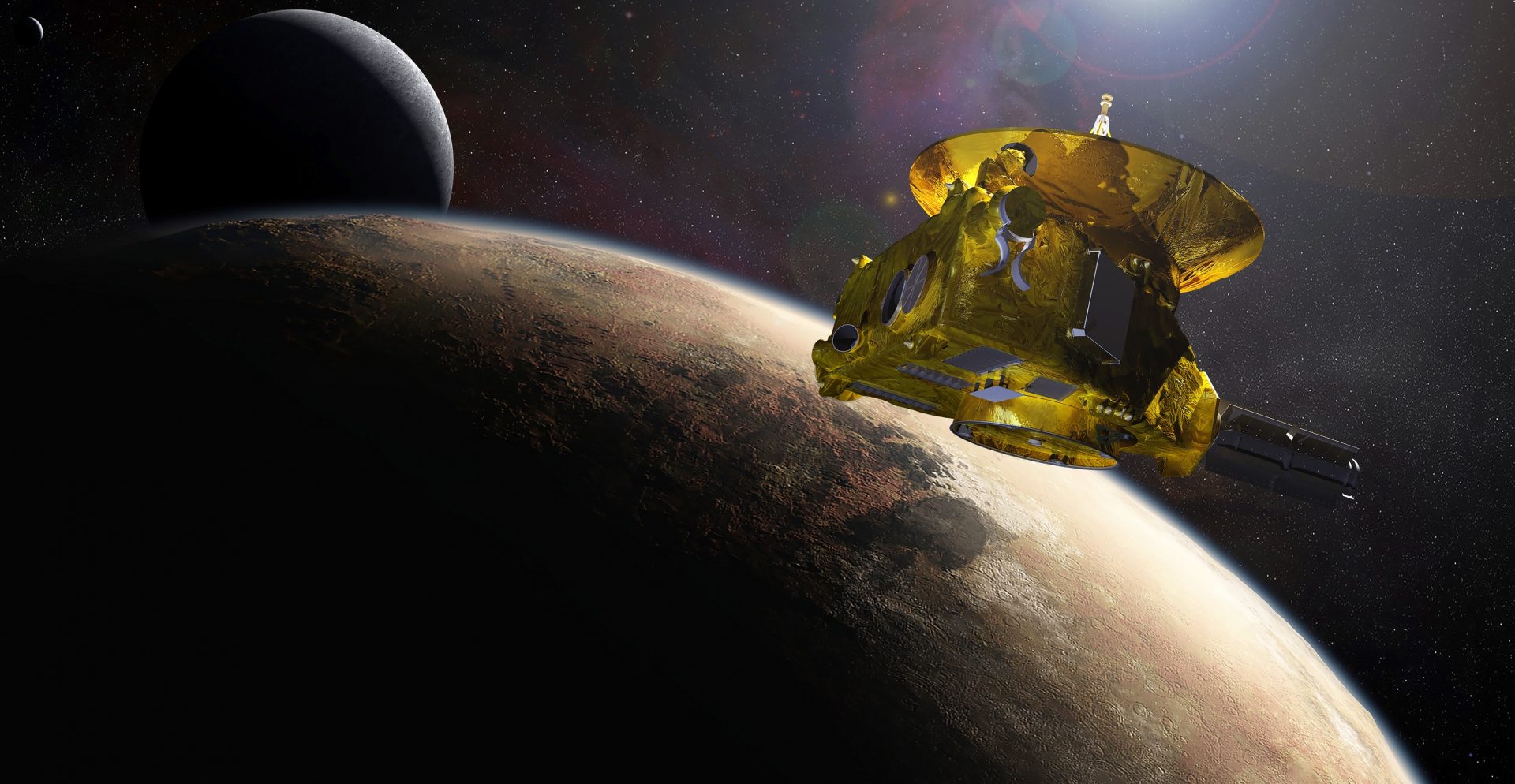[dropcap size=small]P[/dropcap]luto once was an enigmatical place very far away from us and visible only as a point of light until the nine year journey of three billion miles came to its summit as NASA’s New Horizon spacecraft reached Pluto, quickly turning it into a fascinating new world.
The complete data collected by the spacecraft will take around 16 months to reach earth but the data received from it until now has revealed far more about Pluto than we knew since its discovery in 1930.
Here are some delectable things we have learned about Pluto since the New Horizon flyby –
[button color=”red” size=”big” alignment=”center” rel=”nofollow” openin=”samewindow” ]1. Pluto has a an active geology[/button]
Most of the planets and moons of our Solar System are covered with craters due to collision of space rocks or asteroids with the surface, but Pluto strangely has no craters on its surface just like geologically active planets- Earth, Mars and Venus. So there must be some sort of geological activity on the planet that covers up those craters. Pluto also has large icy mountains which also support on-going geological activity.
[divider] [/divider]
[button color=”blue” size=”big” alignment=”center” rel=”nofollow” openin=”samewindow” ]2. Pluto has ice caps[/button]
Many theories suggested about presence of ice on Pluto but nothing was certain. New Horizon’s flyby confirmed about presence of ice and acknowledged us that it is made up of nitrogen and methane.
[divider] [/divider]
[button color=”green” size=”big” alignment=”center” rel=”nofollow” openin=”samewindow” ]3. Pluto is bigger than we thought[/button]
Image of Pluto is a lot clearer to us than before. Accurate measurements of Pluto by New horizon’s spacecraft reveals that the diameter of Pluto is 2370 Km, which is 2-3% larger than previous estimate. Thus, making it the biggest in all the dwarf planets including Eris which was previously considered the biggest.
[divider] [/divider]
[button color=”grey” size=”big” alignment=”center” rel=”nofollow” openin=”samewindow” ]4. Pluto’s atmosphere is made up of Nitrogen[/button]
New Horizon spacecraft detected nitrogen emission from Pluto much earlier than its closest approach. Nitrogen discovery on Pluto wasn’t a surprise but no other sorts of gases were detected. Therefore, Pluto has the purest nitrogen atmosphere, but Pluto is losing its atmospheric nitrogen at a very high rate. Earth has also gone through the same process billion years ago to get rid of toxic hydrogen to make it fit for life to survive.
[divider] [/divider]
[button color=”brown” size=”big” alignment=”center” rel=”nofollow” openin=”samewindow” ]5. Pluto has a reddish-brown colour[/button]
Interactions between methane molecules and UV light from sun triggers the formation of tholins, which are reddish-brown hydrocarbons, thus giving Pluto its colour. This reddish brown colour was suspected from the images of Hubble Space Telescope and New Horizon’s observation has confirmed these possibilities.
